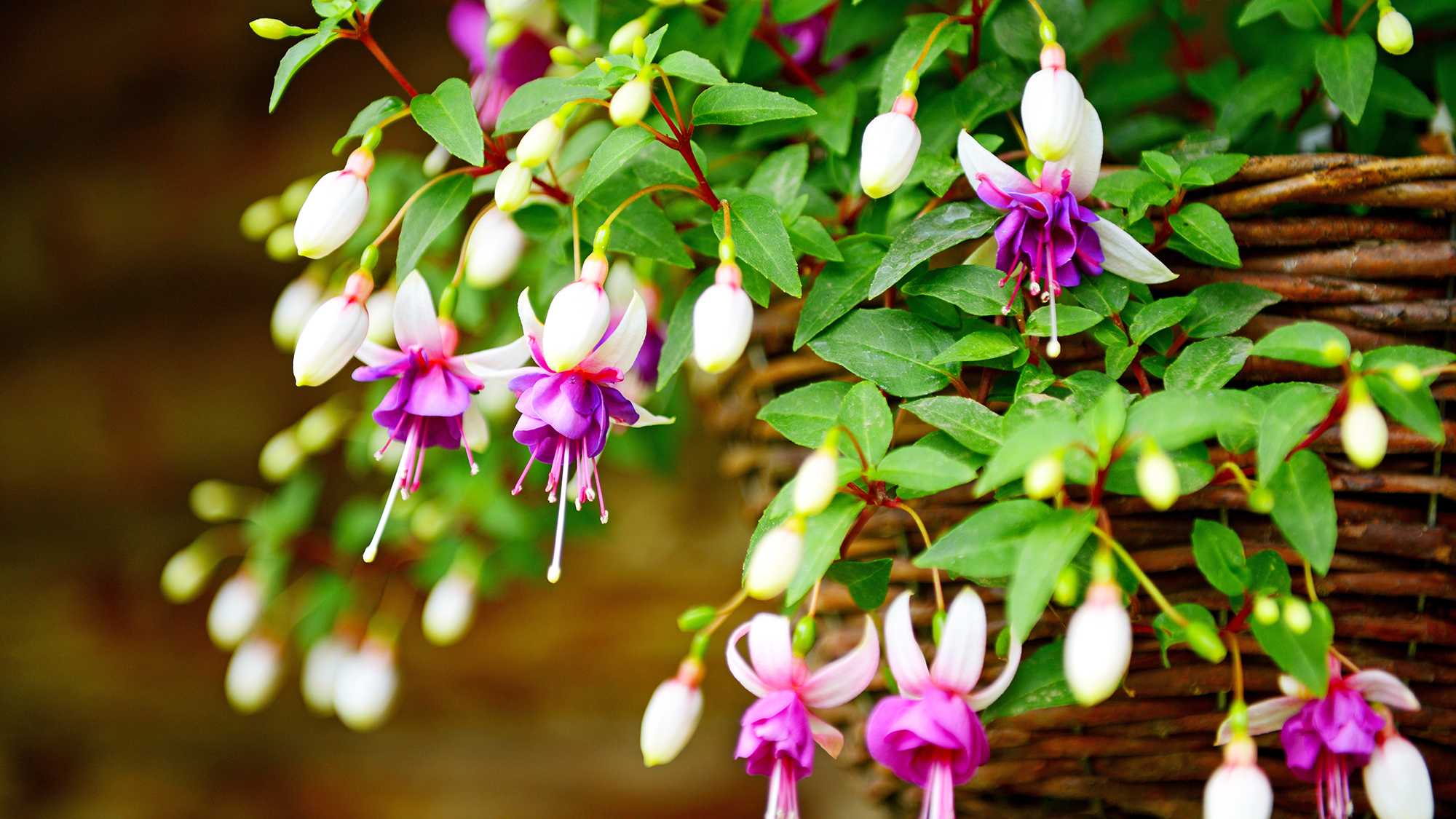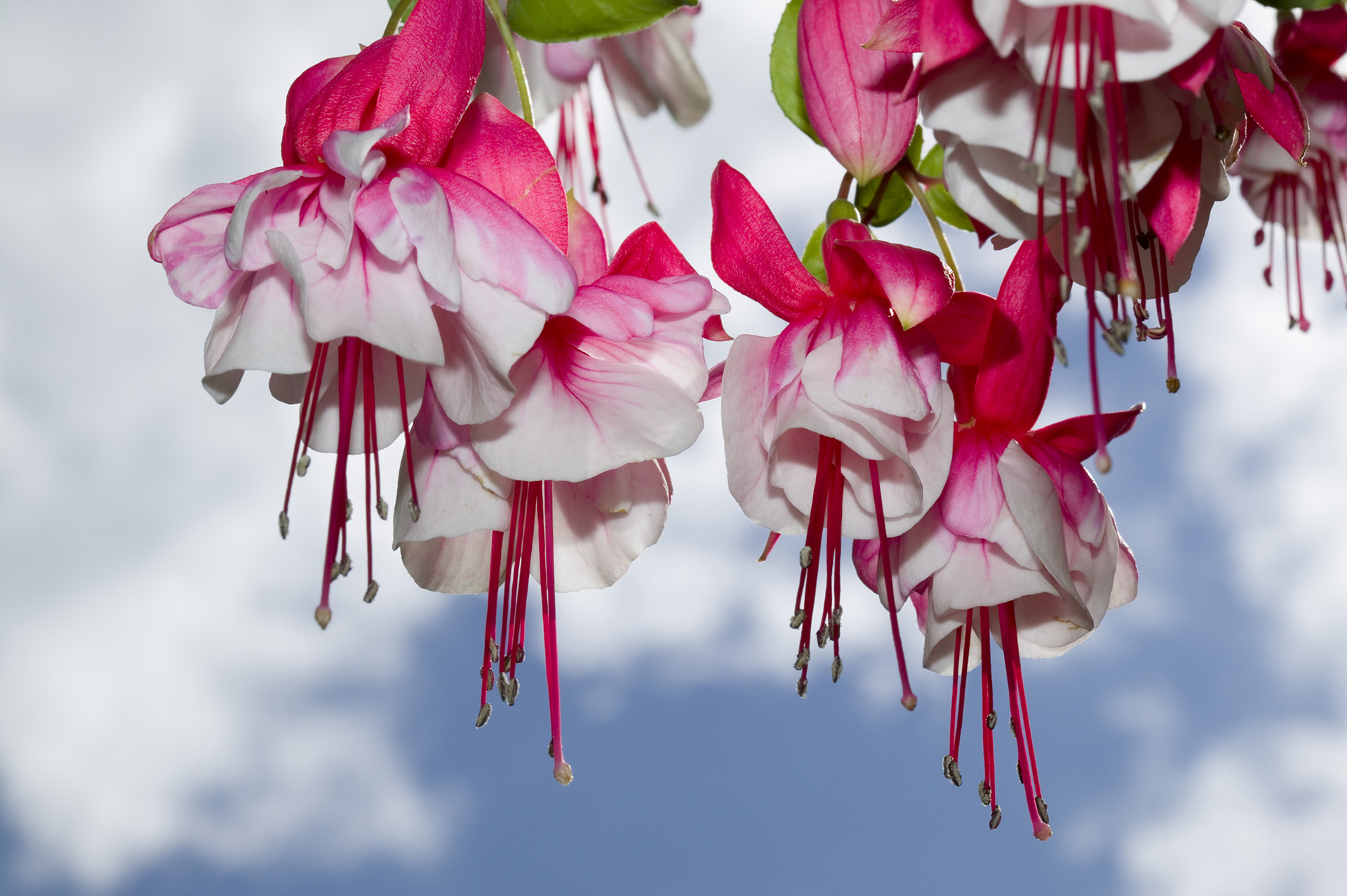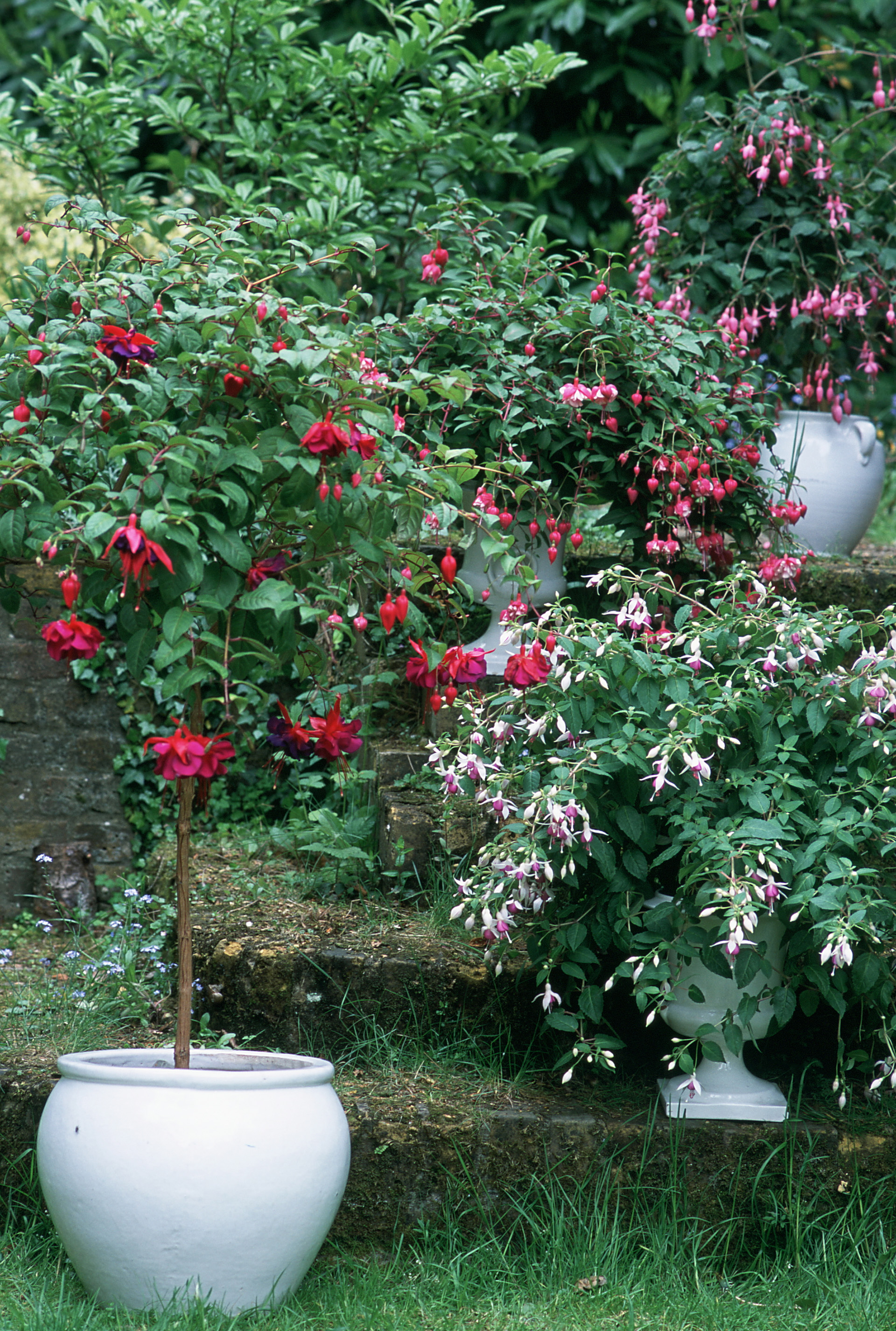How to care for fuchsias – tips for healthy plants and breath-taking blooms
This skill boosting guide on how to care for fuchsias will bring these enchanting flowers into your yard


Discovering how to care for fuchsias can be hugely rewarding. Create long-lasting and dazzling displays by planting these intricate blooms in pots, borders and window planter boxes.
Adored for their delicate hanging bell-shaped flowers, in every shade of white, pink, purple and red, there are simply thousands of varieties of fuchsia to choose from. From the exquisite and tiny to larger, showier blooms that look like dancers with bright swirling skirts, it won’t take long to discover your new yard favourites.
Loved by hummingbirds and pollinators these plants are hugely versatile and can be found in plots as climbers, informal hedges and standard shrubs. Even the flowers and subsequent berries are edible, with a slight peppery taste they can be made into jams and desserts. So, don’t lose time in getting to know these backyard beauties. Our expert guide will give you fail safe results.
How to care for fuchsias
Fuchsias originate from Central and South America and need little care and attention to thrive. They are divided into two groups – tender and hardy – and it’s well worth knowing exactly what your plant needs so you can achieve the best results.
Hardy fuchsias are native to Argentina and south Chile and are perennial flowering shrubs hardy in USDA zones 6-7. Flowering in spring through fall they grow up to four to 10 feet (1.3m) in height.
Tender fuchsias behave like annuals in zones 10-11, even though they are perennials. With their dainty and flamboyant flowers putting on a colorful display from late spring to fall, these varieties will die back in winter. Amongst the best plants for hanging baskets, upright varieties make the perfect pot centerpiece, while trailing types are ideal for the edge of containers and window box planters. You can also find tender fuchsias trained as ‘lollipop’ standards.
Much of a fuchsia’s charm lies in their intricate pendent flowers and knowing about the different parts of these flowers can help demystify plant descriptions and help identify different varieties. The team at Portland Nursery explain more: 'When talking about fuchsia flowers the terms sepal, tube, and corolla are often used. The sepal and tube are the exterior portions, and the corolla is the interior.'
What growing position do fuchsias prefer?

Fuchsias are laid back and easy to grow plants making them ideal for time-poor gardeners. According to Guy Barter at the RHS, ‘Fuchsias grow happily in any garden with moist-but-well-drained soil, sun or light shade, and shelter from cold winds.’
These plants dislike extremes, so avoid planting them in very wet or dry soil, cold and exposed positions or in deep shade where they will refuse to flower.
Plant hardy varieties in early summer and they will flower through to the first frosts. Remove from the nursery pot and plant at a depth where the top of the rootball is 2 inches (5cm) below the surrounding surface. Keep well-watered until the plant is established.
Tender fuchsias must be planted after the frosts have finished. Choose a sunny or part shady spot in well-draining soil. As before, keep well-watered while establishing but avoid very dry or very wet conditions.
How to care for containerized fuchsias
A peat free multi-purpose compost is ideal for planting up all types of fuchsias in pots, baskets or window box planters. Look for those that have a slow released feed added as this will get young plants off to a strong healthy start. Do ensure that any container has plenty of drainage and line the base with a layer of crocks or stones before adding the soil.
It’s worth knowing that the larger the pot the longer it will take to dry out, reducing the amount of watering required. Also, the larger the plants get, the more water they will need.

What problems do fuchsias have?
Fuchsias are pretty easy-going plants requiring little attention for high reward. If leaves start to yellow it is likely the plant is short on nutrients, so treat it to a regular liquid feed.
These plants have few pests but one to look out for is Fuchsia gall mite. These tiny mites feed on sappy new shoots and can spread quickly. The easiest way to get rid of them is to snip off and remove any infected growth, disposing of prunings very carefully. Infected plants can also be sprayed at weekly intervals with horticultural oil spray or insecticidal soap.
It's important to know how to overwinter fuchsias, too, so that your survive the cold weather.
Do fuchsias need pruning?
This is really a matter of personal choice, but bush and standard fuchsias will look better with some pruning. The aim for a bush fuchsia is to create a balanced, rounded dome. ‘To promote bushier growth and more flowers, pinch out the growing tips of each plant while they’re still small,’ says Sue Sanderson at Thompson and Morgan.
For standard – or ‘lollipop’ style plants – you will need to keep the stem clear of shoots and trim the crown to keep the shape. Pinch out growing tips to encourage side shoots to form but avoid taking out the main stem until it reaches the desired height.
Prune hardy fuchsias in spring, once new growth has appeared. Take the old stems back to a pair of buds close to the base of the plant. Avoid pruning in the fall as this will encourage frost damage which can kill the plant.
Sue Sanderson adds, ‘For climbing fuchsias prune out the oldest stems in spring when the fresh buds begin to break and reduce remaining stems, so their vigorous growth is restricted to the space you have available.’
Sign up to the Homes & Gardens newsletter
Design expertise in your inbox – from inspiring decorating ideas and beautiful celebrity homes to practical gardening advice and shopping round-ups.

Journalist Jill Morgan has spent over 20 years writing and editing gardening, interior and property features. Titles she has worked on include The English Home, House Beautiful, Ideal Home, Houzz and Modern Gardens and she writes regularly for H&G as a Contributing Editor. Whilst she is a dab hand at renovation projects and DIY, she is happiest when out digging in the garden or planning a new border.
-
 This simple marble hack elevates my budget-friendly wooden kitchen countertops and prevents the dreaded water damage for way less than you’d think
This simple marble hack elevates my budget-friendly wooden kitchen countertops and prevents the dreaded water damage for way less than you’d thinkThis design trick looks expensive, solves a problem, and was the easiest decision I made during my kitchen reno
By Charlotte Olby Published
-
 Emily Blunt gifted Cillian Murphy this $545 pillow – she's 'obsessed' with these luxury pillows, and frankly, so are we
Emily Blunt gifted Cillian Murphy this $545 pillow – she's 'obsessed' with these luxury pillows, and frankly, so are weThe Oppenheimer stars sleep on this ultra-luxe goose down pillow – here's why we love it – plus our affordable alternatives from $35
By Sophie Edwards Published